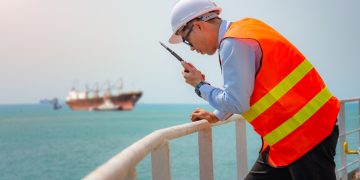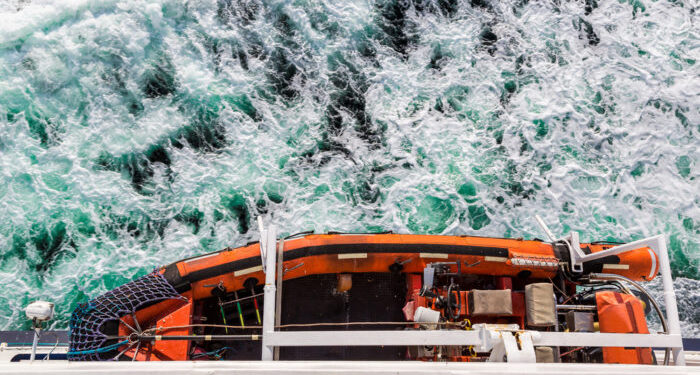In the unlikely event of a life-threatening situation onboard, it may be time for vessel abandonment, ordered by the Master. Abandoning the ship needs to take place at the right time, followed by specific steps and procedures, as the decision to leave the vessel and fall into the sea comes with great risk.
The abandonment of a vessel follows after the crew and the people responsible have done everything they could to prevent the danger and ensure the safety of everyone onboard. The Master is the one to give the order to abandon the vessel, after all safety attempts have been attempted.
Conditions that lead to abandoning a vessel
- In case of a fire: When the flares are increasing and block the access to the place where the fire extinguishers are kept, and there is no possible way to put the fire out. Fires is a major risk for a vessel, particularly on a passenger vessel as a great number of people will have to be evacuated;
- In case of sinking: A sinking vessel leaves no other choice than abandonment, as the situation cannot be amended;
- In case of capsizing;
- In case of vessels’ collision.
In any marine accident, the vessel has to be abandoned after the Master and their Officers have evaluated the stability of the vessel.
Abandon the vessel after the master’s order
Every vessel has a variety of emergency signals, – not to be ignored – either it is an alarm caused by a fire or a verbal order that calls for abandonment. Specifically, the emergency signal is used to alert people onboard of a dangerous situation.
[/two_third_last]
Additionally, the “abandon a ship alarm” is only used under the condition that the vessel has to be immediately evacuated and this means that all safety efforts have been exhausted.
The decision that calls for vessel abandonment is to be made by the Master; under all conditions of abandon ship the notification signal is a succession of more than six short blasts followed by one long blast of the whistle supplemented by a comparable signal on the general alarm.
The signal is responsible of preparing the crew and the passengers to evacuate the vessel; Therefore, after hearing the signal, they have to follow specific procedures and steps to ensure the safety of everyone onboard.
Did you know?
In the popular tradition of the sea, a ship’s captain is expected to stay until all the passengers have been safely evacuated. However, in Costa Concordia accident in January 2012 , Captain Francesco Schettino is said to have left the Costa Concordia while many passengers were still struggling to reach safety.


































































































































